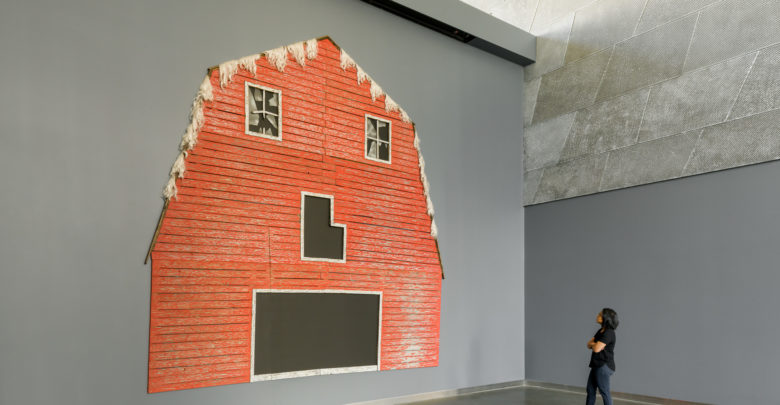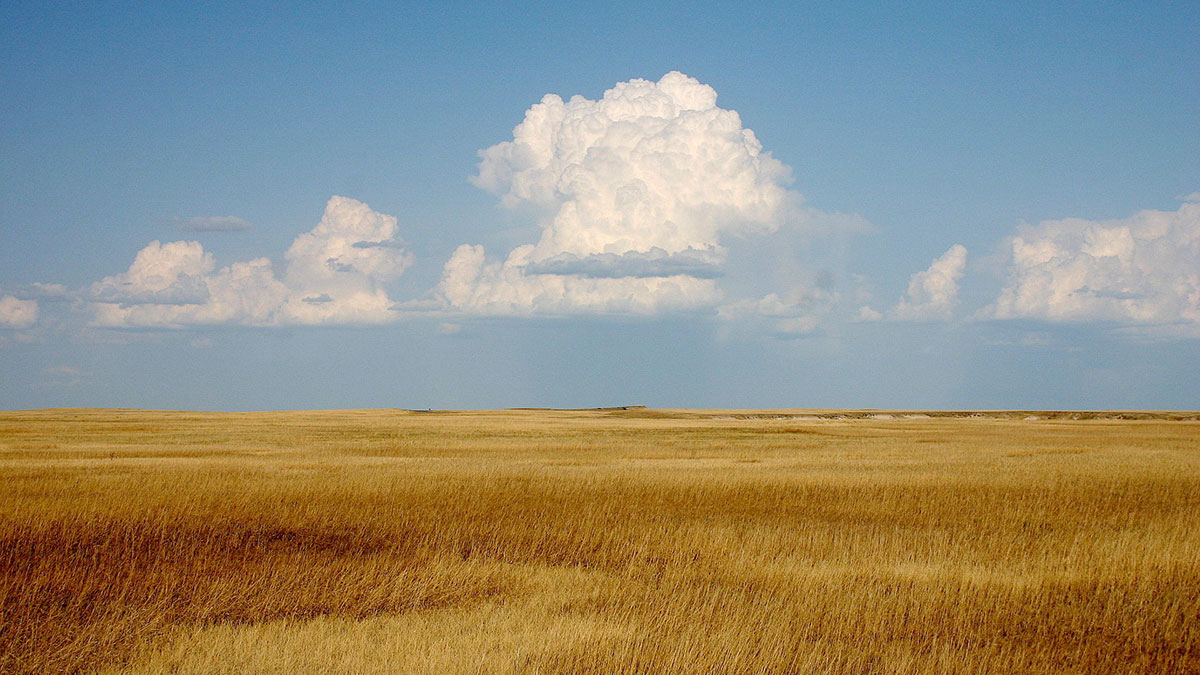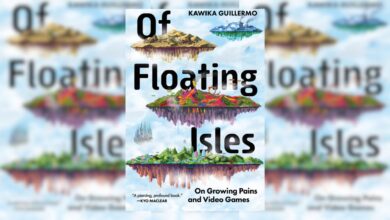‘Barn Skull’ explores growth and collapse in agriculture
Through the face of an aging farmer and his barn, Jude Griebel connects prosperity and decline as it relates to agriculture and Alberta's future.
 Blaine Campbell
Blaine Campbell Jude Griebel, an artist who grew up in rural Alberta, explores prosperity and collapse in his newest exhibit at the Art Gallery of Alberta (AGA), Barn Skull. A towering red barn that’s falling apart, Barn Skull successfully comments on the growth and decline of homesteading in Alberta, and how homesteading is the centre of Albertan life.
Throughout his career, Griebel has centred his pieces around destruction and growth, and Barn Skull is no different. To Griebel, neither can exist without the other; in order to grow, some things need to end. Through this lens, he’s able to comment on the growing issue of large-scale farming in Alberta, what it means to be a farmer in a changing world, and how we will be able to adapt.
Griebel is famous for using anthropomorphic styles in his art that allows the viewer to see not only the environment, but also the person that it impacts. In this case, the barn is meant to resemble an aging farmer whose glory days are long behind him. As little kids drawing pictures of farms know, barns resemble faces. The windows and door align perfectly to create eyes and a mouth. Griebel, however, creates a face that is both haunting and melancholic. With shattered windows, worn paint, and a greying trim meant to resemble hair, the barn is a shadow of its old self.
When you look at Barn Skull, you are immediately struck by the emptiness that you feel. The piece itself is quite simple, but overwhelmingly large. Standing in front of it, towering above you, it feels as if it’ll swallow you whole. The blackness of the mouth and nose create a black hole that hollows out any emotion you have.
One thing I loved about this piece was how personal it felt. Looking up at Barn Skull, I felt like I could see into Jude Griebel’s childhood, as well as my own. Griebel based this piece on a barn that sat on one of his family’s properties in Southern Alberta that his grandfather had homesteaded. Looking up at it, Barn Skull feels oddly familiar while also completely estranged.
It serves as a reminder of where Albertans came from, and also where we’re going. Alberta is a province built on farming and agriculture. As such, there are hundreds of dilapidated barns and farmhouses that line the province. Homesteading is an integral part of Albertan culture and history, even if popular culture has forgotten.
While the piece was overwhelming in size, it was underwhelming in its design. Barn Skull only had a few features, including the windows, trim, paint, and nose. However, its simplicity helped it convey a message about humanity, our growth, and Alberta itself. Had Barn Skull been more complex, it wouldn’t have conveyed the same message as effectively.
The barn is the centre of farms. By taking everything that makes them complex out of the picture, Griebel is able to reach the bare bones of the structures, and agribusiness itself.
Barn Skull will be at the AGA, in Manning Hall, until February 27.




